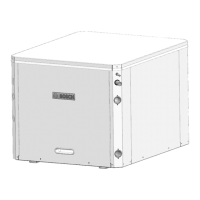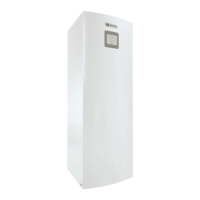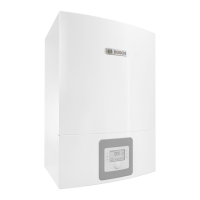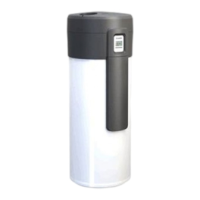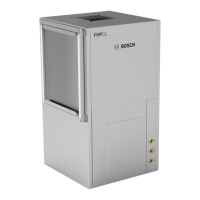Start-up
55
CS3000 AWP – 6721852570 (2023/04)
Preliminary checks
Unit power supply OFF
Table 53
Start-up sequence
Unit power supply ON
Table 54
7.1 Refrigerant circuit
▶ Visually inspect the refrigerant circuit: the presence of oil stains can
be a symptom of leakage (caused e.g. by transportation, handling or
other);
▶ Check if the refrigerant circuit is under pressure. Please use the unit
manometers, if present, or service manometers;
▶ Make sure that all the service outlets are closed with proper caps; if
caps are not present a leak of the refrigerant can be possible;
▶ Open all of the refrigeration circuit shut-off valves (if applicable).
7.2 Hydraulic circuit
▶ Before connecting the unit to the hydraulic system, make sure that
the hydraulic system has been washed and that the water has been
drained;
▶ Check that the hydraulic circuit has been filled and pressurized;
▶ Check that the shut-off valves in the circuit are in the “OPEN”
position;
▶ Check that there is no air inside the circuit, and bleed it through the
vent valves in the high points of the system if necessary;
▶ When using antifreeze solutions, make sure the glycol percentage is
suitable for the type of use envisaged.
Neglecting the washing phase will lead to several filter cleaning
interventions; at worst it can cause damage to the exchangers and other
parts.
7.3 Electric circuit
▶ Check if the unit is connected to the earthing system;
▶ Check if the conductors are tightened as the vibrations caused by
handling and transport might cause these to come loose;
▶ Power the unit by closing the external isolation device but leave the
main switch OFF;
▶ Check the values for network frequency (+/-6%) and voltage (which
must be within the limits: 380-415V 3N~ 50Hz);
▶ Check and adjust the phase balance as necessary: it must be lower
than 2%. Example:
– 400 - 6% = 376
– 400 + 6% = 424
Working outside of these limits can cause irreversible damages and voids
the warranty.
Compressor crankcase resistances
Connect the compressor oil heating resistances, at least, 8 hours before
starting the compressor:
• at the first unit start-up;
• after each prolonged period of inactivity.
▶ Power the heaters: isolator switch on 1 / ON.;
▶ Check the power consumption of the resistances to make sure that
they are functioning;
▶ Start-up the compressor only if the crankcase temperature, on the
lower side, is higher than the outside temperature by at least 10°C;
▶ Do not start the compressor with the crankcase oil below operating
temperature.
YES NO
1 Safe access
2
Suitable frame to withstand unit weight + people
weight
3 Functional clearances
4
Air flow: correct return and supply (no bypass, no
stratification)
5 Condensation drain
6 Considered level to be reachable by snow
7 Considered main winds
8 Lack of chimneys/corrosive atmospheres/pollutants
9 Structure integrity
10 Fans run freely
11 Unit on vibration isolators
12 Unit levelled
13 Unit input water filter + shut-off valves for cleaning
14 Vibration dampeners on hydraulic connections
15
Expansion tank (recommended volume = 10%
system content)
16 Minimum system water content
17 Clean system
18
Loaded system + possible glycol solution + corrosion
inhibitor
19 System under pressure + vented
20 Refrigerant circuit visual check
21 Earthing connection
22 Power supply features
23
Connections performed by Customer: electrical
connected, configuration
YES NO
1
Compressor crankcase heater operating at least
since 8 hours
2 Off-load voltage measure
3 Phase sequence check
4 Pump manual start-up and flow check
5
Refrigeration circuit shut-off valves opening (if
applicable)
6 Unit ON
7 Load voltage measure
8
If remote On-Off:
set dip-switch S5-3 on ON
9
If units in modular configuration:
set dip-switch S12-2 on ON
set unit address via ENC4
10
Verify the lack of bubbles in the liquid light (if
applicable)
11 Check of all fan operating
12 Measure of return and supply water temperature
13 Super-heating and sub-cooling measure
14 Check no anomalous vibrations are present
15 Set-point personalization
16 Scheduling customisation
17 Complete and available unit documentation
YES NO
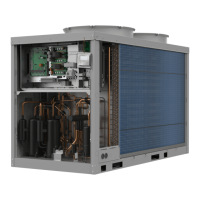
